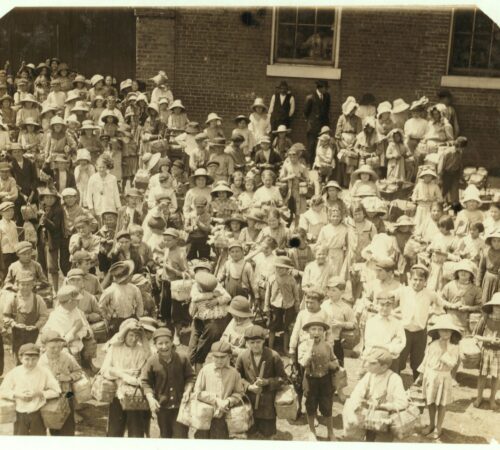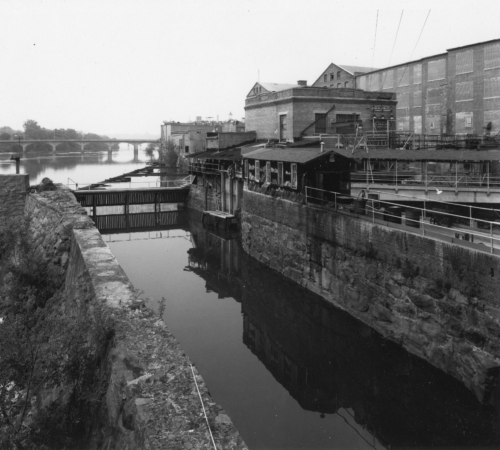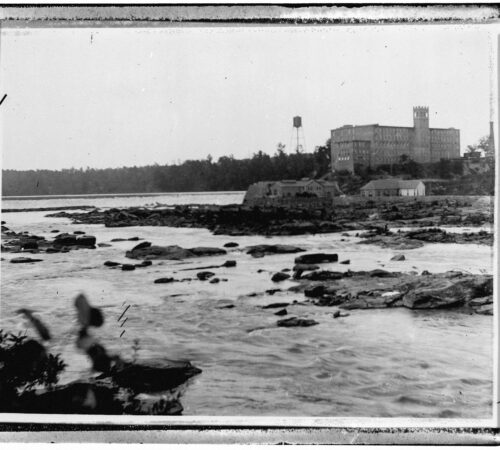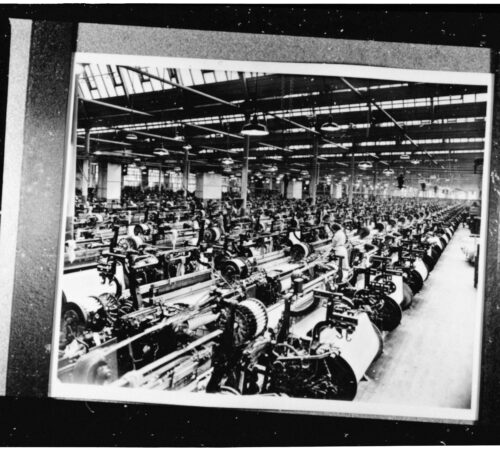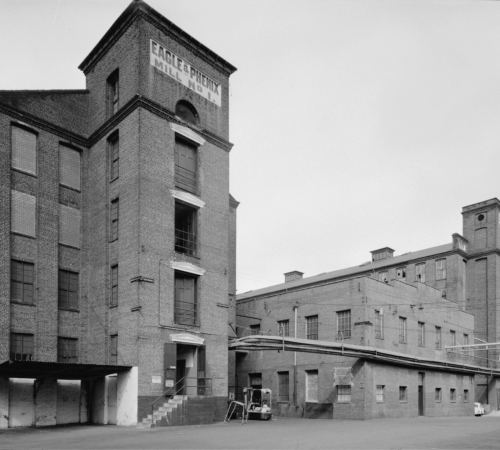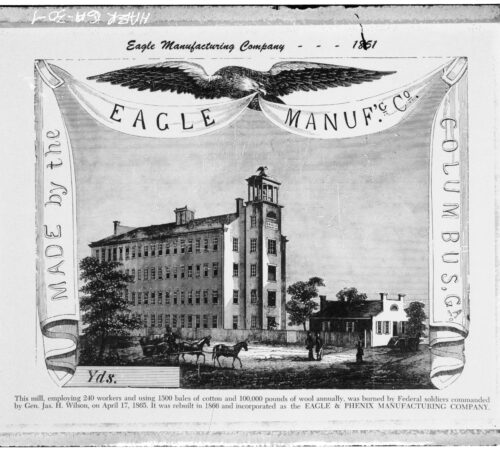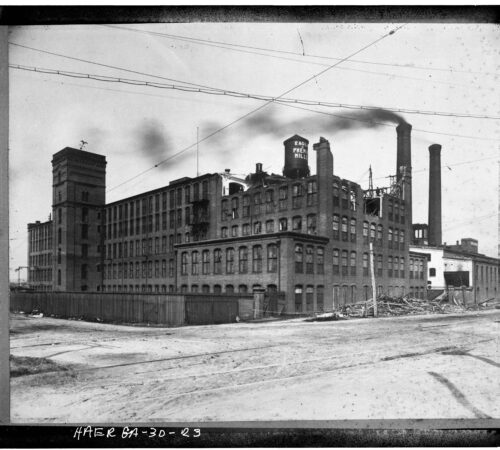Discover a leading center of cotton production in the South for over a century, from the early 1800s through the mid-1900s.
Visit
Things to Do
- Chattahoochee Riverwalk, 1000 Bay Avenue : Enjoy the historic Chattahoochee River waterfront on this 15- mile linear park and visit the mill town of Bibb City. Soon after 1828, when state legislation set aside land to become the town of Columbus, steamboats were unloading cotton here. The Riverwalk extends into the historic cotton mill town of Bibb City.
- VisitColumbusGA, 900 Front Avenue: Learn more about the city’s industrial history in this historic downtown building. Stop by the Visitor’s Center for a comprehensive list of where to stay, places to eat, and things to do. Their hours of operation are Monday through Friday 8:30 am – 5:30 pm and Saturday 10:00 am – 1:00 pm.
- Columbus Fall Line Trace, 14th Street Pedestrian Bridge: This trail runs between the 14th Street pedestrian bridge in Uptown and Psalmond Road Recreation Center in Midland. It is 11 miles in length but connects with the Chattahoochee Riverwalk for a total of 26 miles. Access to the trail is available from park-and-ride lots, as well as where the trail intersects with METRA bus routes.
- Columbus Museum, 1251 Wynnton Road: Discover the city’s rich history, including exhibit areas on the textile industry in the second-largest art museum in Georgia. This museum houses over 14,000 artifacts and objects to tell the region’s history and development. Their hours of operation are Tuesday, Wednesday, Friday, and Saturday 10:00 am – 5:00 pm, Thursday 10:00 am – 8:00 pm, and Sunday 1:00 pm – 5:00 pm.
- Columbus State University Archives, 4225 University Avenue: Visit the Columbus State University campus and access these archives to conduct research related to the region’s textile industry. The archives are open Monday through Friday,9:00 am – 12:00 pm and 1:00 pm – 5:00 pm; hours follow those of the Schwob Memorial Library, inside which the archives are located. Appointments are not required but are recommended. For more information, call 706-507-8674.
- Eagle & Phenix Mill Business Center, 1221 Front Avenue: The Eagle & Phenix Mills, long a driving force in the city’s economy, has been redeveloped. The ground floor of Mill No. 3 is home to a business center with a restaurant, while the upper floors and the other mill buildings are now home to apartments and condos.
- Heritage Park, West 7th Street: Explore this celebration of the industrial heritage of Columbus through self-guided trails. This park features a recreation of a dam on the Chattahoochee River. Call Historic Columbus at 706-322-0756 for more information.
- Whitewater Express/W.C. Bradley Cotton Warehouse, 1017 Front Avenue: Experience the powerful Chattahoochee River through this outdoor rafting adventure! After your exploits on the river, come back to the Whitewater Express base at the historic W. C. Bradley Co. Cotton Warehouse and enjoy a meal in one of the restaurants which now occupy the redeveloped warehouse.
- Heritage Tours, 1440 2nd Avenue: Experience city history through these tours sponsored by Historic Columbus. Call 706-322-0756 for more information.
- Paragon Mills/Hamburger Cotton Mills/W. C. Bradley Manufacturing Company Mill, 1100 10th Avenue B: This site was originally constructed as the Paragon Mills by the Swift family in the 1880s. They were shortly bought out by their partner, Louis Hamburger, who renamed it to Hamburger Cotton Mills. He passed the mill on to his son, George Swift Hamburger. The mill went through financial difficulty in the 1910s and was eventually purchased by W. C. Bradley, who renamed the mill once again. After his death in the 1940s, his family sold the mill and exited the textile business. The mill was repurposed to house non-textile related industries. Today, the mill still stands and is home to a thrift mall.
- Swift Manufacturing Company Mill, 1510 6th Avenue: The southernmost portion of the Swift Manufacturing facility has been redeveloped and turned into a business center and an art gallery. The northern portion is private property, having been converted to apartments.
Places to See
The following properties are not open to the public, but you can view them from the exterior to learn more about the buildings that supported the textile industry here.
- Cooper Mattress Manufacturing Company, 941 9th Street: This company opened in 1917 and operated until around 1980.
- Georgia Webbing and Tape Company, 1340 11th Avenue: This company was established and 1922 and operated as the Georgia Webbing and Tape Company until its closure in 1957. Now, this location serves as a warehouse.
- Jordan Vocational High School, 7857 Howard Avenue: This school previously served as an industrial training place for “younguns”.
- Julius Friedlaender Company, 445 Andrews Road: Established in 1889 and incorporated in 1922, this company originally produced jute products. In 1970, it was renamed the Friedlaender Bagging Company and operated well into the 1990s.
- West Point-Pepperell Columbus Division, 3201 1st Avenue: This mill was originally known as Columbus Manufacturing Company. Wellington-Sears & Co., the selling agents and major sales agents of West Point Manufacturing held a large stake in the mill. The operation was absorbed by West Point Manufacturing after they purchased Wellington-Sears, which continued to operate as their subsidiary, in the 1940s. After the collapse of West Point-Pepperell in the early 1990s, the mill became a part of Wellington-Sears which broke away from the shattered company. This mill is intact and has been redeveloped into apartments.
- West Point-Pepperell Cussetta Division, 628 5th Street: This facility was built in the 1970s by WestPoint-Pepperell as a finishing plant. After the collapse of WestPoint-Pepperell in the late 1980s, the Cussetta plant became a part of Wellington-Sears and continued to operate into the 2000s. The name Wellington-Sears can still be seen on the building from the street.
History
Situated at the head of navigation for the powerful Chattahoochee River, Columbus quickly became a center of textile manufacturing in the early 1800s. The first textile mill dates to 1838, and by 1850, Columbus boasted five cotton mills. The Eagle Manufacturing Company was the largest of these mills. Established by New York native William Young, the company operated 10,000 spindles and employed 500 people in the antebellum period.
Georgia textile mills turned to military production during the Civil War, and Columbus mills ranked among the top five producers for the Confederacy.
Textile owners rebuilt soon after the Civil War, with the first mill opening by December 1865. With great optimism, the owners of the largest Columbus mill reestablished their factory and renamed it the Eagle and Phenix Mills in 1866, incorporating the symbol of the phoenix rising from the ashes of war. William H. Young established the Eagle Mill and shortly absorbed the nearby Howard Factory. This made Eagle Mill the second largest in the state. Young, then, added four more mills by 1876, increasing production four times. His mills were the third largest producers of cotton textiles in Georgia by 1880. Locally the Young operated mills manufactured 80 percent of the textiles, employed 65 percent of the total labor force, and used 95 percent of the water power. George Parker Swift opened the Muskogee Mills in 1868 and in 1880 added five more operations. The Young and the Swift families–became the leading dynasties of the cotton industry in Columbus.
Bibb Manufacturing opened the Columbus Mill in 1900 along the Chattahoochee River, purchasing a dam site from the Columbus Fire Company. The village around it was called Bibb City. This mill became the largest cotton mill in the country. In the 1920s, the mill began producing cotton tire cord for the automobile industry.
As the textile industry declined after World War II, with increased foreign competition, most cotton mills in Columbus closed. A few were converted to new types of production. Preservation advocates have worked to preserve the historic industrial waterfront. As of the late 2000s, the Eagle and Phenix Mill has been turned into a residential and commercial space, but the history of the building and the impact that the textile industry had on the community is still seen today.
Charter Trail Members
- VisitColumbusGA
- Greater Columbus Georgia Chamber of Commerce
- Historic Columbus Foundation
- Mildred L. Terry Public Library
- North Columbus Public Library
- South Columbus Public Library
- The Columbus Museum
- Uptown Columbus, Inc.
- Muscogee Genealogical Society
Resources to Explore
Click on the following links to learn more about this region.
- Columbus State University Archives
- Facts for Kids
- Digital Library of Georgia
- Georgia Archives Virtual Vault
- Georgia Historical Society
- New Georgia Encyclopedia
Back to Community List
Email the Trail at wgtht@westga.edu or visit our Contact Us page for more information.
